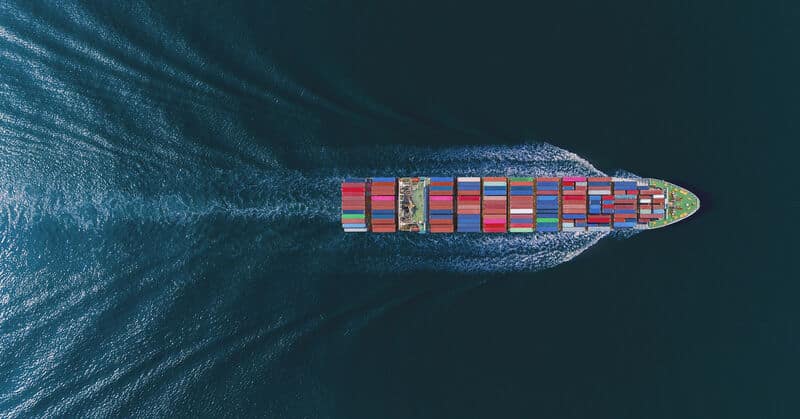Navigating EU ETS with data – and positively impacting shipping’s decarbonisation trajectory
EU ETS and Shipping: Navigating Carbon Regulations for a Sustainable Future

The European Union Emissions Trading System (EU ETS) stands as a cornerstone in the global endeavour to mitigate climate change, and its extension to the maritime sector earlier this year has already begun to accelerate the shift towards greener shipping.
Expanding EU ETS to cover shipping is integral to the EU’s Green Deal, and requires shipping companies to adapt rapidly to stringent carbon regulations. In the pursuit of compliance, leveraging robust data is one of the best ways for the industry to steer its decarbonisation efforts efficiently and sustainably.
EU ETS places a cap, or limit, on the total amount of greenhouse gas emissions that participating industries can release. The cap is reduced over time, generating emission reductions. Within this capped limit, companies receive or purchase allowances, which represent the right to emit a certain amount of greenhouse gases.
Companies covered by the EU ETS are required to monitor and report their actual emissions, ensuring transparency and accountability. Compliance entails surrendering enough allowances – either received or purchased – to cover participants’ verified emissions at the end of each compliance period.
Shipping’s entry into EU ETS is being managed in a step change fashion. Initially, the industry’s participation in the regulation only covers CO2 emissions, but from next year onwards other GHG emissions such as CH4 and N2O will be accounted for as well.
In 2025, companies will pay for 40% of the emissions they reported in 2024. This then ramps up to 70% in 2026 and 100% of reported emissions from 2027 onwards.
By placing a price on carbon emissions, EU ETS creates a financial imperative for shipping companies to reduce their carbon footprint. This economic lever aims to accelerate the industry’s transition to greener practices.
However, compliance should not be merely about financial penalties but also about seizing the opportunity to transform operational efficiencies through data-driven strategies.
Data is the lifeblood of modern shipping. Comprehensive emissions data collection and analysis allow for precise monitoring and management of carbon output. Advanced analytics enable ship operators to optimise routes, reduce fuel consumption, and ultimately lower emissions. By integrating real-time data on fuel usage, weather conditions, and engine performance, companies can make informed decisions that balance operational efficiency with environmental responsibility.
Moreover, predictive analytics can forecast maintenance needs, ensuring vessels operate at peak efficiency and minimising unexpected downtime that could result in increased emissions. The integration of AI and machine learning algorithms further enhances the capability to predict and mitigate emissions by identifying patterns and anomalies in vast datasets.
By harnessing data, shipping companies can pre-emptively address inefficiencies – and, critically, ensure compliance with EU ETS mandates while also enhancing profitability.
However, the challenge lies not merely in data acquisition but in its intelligent application. The industry must invest in training and development to cultivate a workforce adept in data science and environmental regulations. By fostering a culture of data literacy, shipping companies can empower their personnel to make informed decisions that align with both economic and environmental objectives.
Collaboration across the maritime supply chain is also critical. Connecting ship to shore, sharing data among shipowners, ports, and logistics providers can create a holistic view of emissions across the entire transport network. This collaborative approach can identify synergies and inefficiencies, driving collective action towards decarbonisation.
We must also reflect on the fact that laws are only heading in one direction: towards being stricter on shipping’s environmental performance. In this context, EU ETS serves as both a stick and a carrot, penalising excessive emissions while incentivising innovation.
Moreover, effective emissions reporting with respect to EU ETS creates the opportunity to go beyond regulations and use the same data to optimise operations and boost profitability, allowing organisations to do more with the data they have. By integrating emissions data with other operational metrics, shipping companies can identify inefficiencies and implement cost-saving measures. This dual approach not only ensures regulatory compliance but also enhances overall operational performance, demonstrating that environmental responsibility and economic viability are not mutually exclusive.
We understand the challenges faced by maritime professionals in meeting the new demands of EU ETS whilst also navigating decarbonisation more generally. It’s why we have designed our Emissions Analytics and Vessel Reporting toolset to enable users to navigate the intricacies of EU ETS with confidence, going beyond regulations and optimising operations and profitability.
We can collect and validate emissions data at the voyage, vessel and fleet level, enabling access to trusted energy efficiency and emissions density metrics and the preparation of specific reports for various compliance mandates in one place.
The convergence of data and regulatory frameworks like the EU ETS offers a transformative pathway for the maritime sector. By embracing data-driven strategies, the shipping industry can not only meet compliance requirements but also pioneer in the global quest for reaching zero emissions. This proactive approach will safeguard the environment and enhance the long-term viability and competitiveness of shipping companies around the world.

